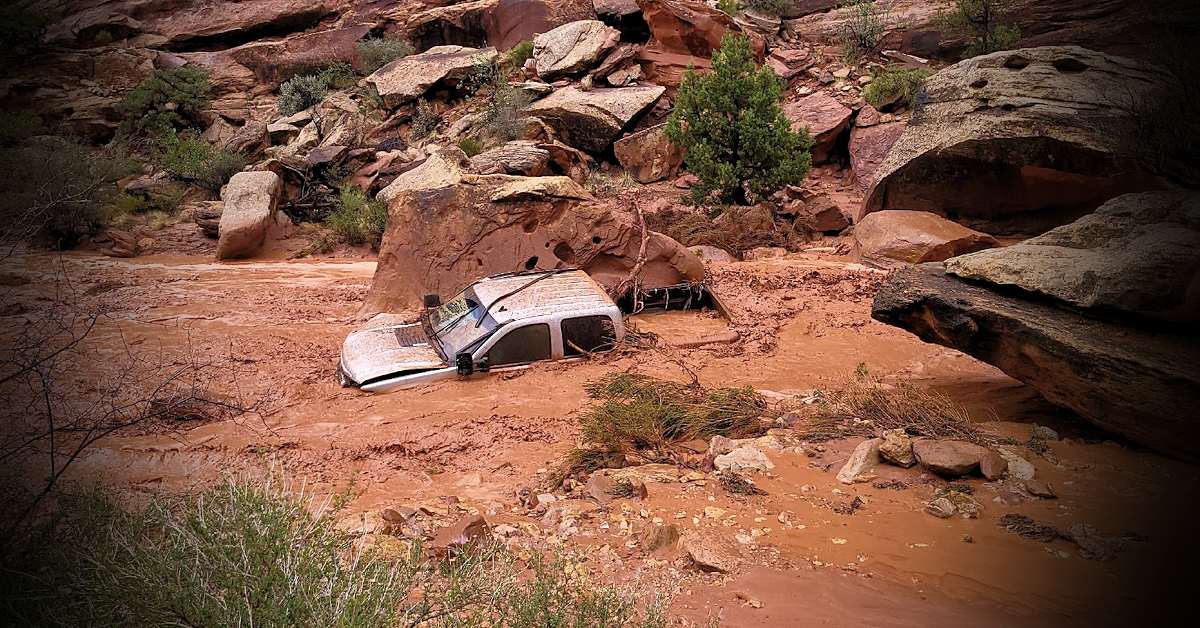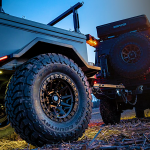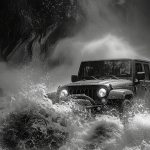Lessons from the Flash Floods of Moab
Here in Utah it’s been quite a summer of adventure travel. Nothing adds to the adventure like sudden catastrophic weather.
I spoke with a cousin who went to offroad in Moab, where the floods have been epic this month of August 2024. Local news covers the flooding in town this way:
That video is discussing the affects of the floods on the town of Moab. But what never seems to get news coverage is the flooding that happens in the surrounding landscape where people go to offroad, camp and to seek solitary adventures.
Imagine all that water and being alone out in it.
Would your rig be able to handle it? Would you be able to survive it?
That’s what my cousin was trying to tell me. He’s a pretty self-sufficient individual with lots of outdoor and offroad experience. He buys premium equipment and has had high confidence in his abilities. But in all his years he has never seen what Moab seems to be going through this summer of 2024.
Flash floods in the canyonlands of Southern Utah are nothing new, of course.
That’s how the wonder of our nature here in Utah has crafted those canyons. But until you get caught in one of those storms it is very difficult to picture it.
How do you best prepare for it?
As videos like the one shared above, local experts have lots of advice about what to do:
- Know your surroundings
- Watch the weather forecasts
- Communicate with locals and authorities
- Don’t go to vulnerable areas
This is all great advice.
But weather remains unpredictable and as we sadly learn every year some people just get caught in weather that puts them in danger.
To give you some real-world vision in to sudden southwest flash floods we share this video from Trailmater Offroad Recovery as they head into Capitol Reef to repair a vehicle stranded out in a remote area. On their way a storm moves in and they find themselves driving through a wash or two during a flash flood.
“This seems like a bad idea” is a comment made as they try to make their way to an area local authorities eventually stopped them from accessing. It took them days to do the job and they saw quite a bit of drama caused by the weather along the way. Watch this video and picture yourself driving your rig through what these guys do:
What would you do when you’re out there alone and flash floods like this happen? How is it possible to navigate through a landscape that has suddenly changed like this? What’s the smart thing to do?
In situations where nature takes out the road in an offroad situation the preparedness you make in other ways pays off.
The first things you will want to do are:
- Get to high ground immediately
- If you can get out safely from the area of danger, do it expeditiously
- If you can’t get out, find or create shelter on high ground
- Stay away from the water. Seems logical but Search and Rescue teams will tell you this is the number one reason people get in to trouble. They believe their equipment and their skills can handle it. Most times in a flash flood, it can’t.
- Communicate with someone right away if you are able to do so. Cell coverage and even radio reach is often limited in the remote areas of the Southwest. But if you can make contact to let someone know where you are it’s a good idea. As the video above shows, it could be days until you can get out.
- Take inventory of vital things: drinkable water, food and fuel. Conserve immediately because you don’t know how long you might be out there.
- If you’re safe, survey the area as quickly as possible. Look for possible avenues out once the waters have receded. In Utah we call it “monsoon season” because summer is filled with hot afternoons interrupted by frequent thunderstorms. You might only have a short window of respite before flood waters come back.
Likely the best advice you can follow is to research ahead of time what do to in event of a flash flood.
All of the southwest of the US is prone to severe summer flash floods. They happen every summer and some summers, as the summer of 2024 has turned out to be, are far worse than others.
The National Weather Service does a great job communicating possible dangers, even in the remote areas.
Having a radio with NOAA capabilities and following their long-held advice is worthy of note when storms are raging:
- Turn around, don’t drown.
- Never drive through rushing water of any depth
- Do not park or camp along streams or washes
- Six inches of water will make you fall. Don’t walk in the water if you don’t have to.
- If the floodwaters rise around your vehicle, get out and move to higher ground right away. Even heavy-duty vehicles cannot withstand the rush of heavy waters beyond two feet in depth. The vehicle will turn into a raft very quickly, making the danger that much more pronounced and unpredictable.
For my cousin, who was there during the most recent flood event mentioned in the video at the top, he admits to being humbled by nature’s outburst.
It’s got him rethinking everything from his equipment to his levels of preparedness. He tells me he never seriously considered a satellite phone but now he is, for example. He also said he wanted to add flood preparedness to his training, adding it to a list of classes he wants to take at the next OverlandExpo he attends.
The intent in sharing these thoughts is not to frighten you. It is to encourage you to become more informed.
We find that our offroad customers are great at figuring out challenging things.
It might be a good idea to give all that some thought before the rain falls on you.
See posts like this in your email. Subscribe today!





Leave a Reply
Want to join the discussion?Feel free to contribute!